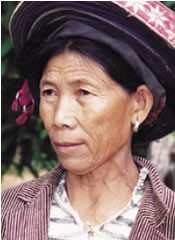Biyo in China

Photo Source:
Copyrighted © 2026
Operation China, Asia Harvest All rights reserved. Used with permission |
Send Joshua Project a map of this people group.
|
| People Name: | Biyo |
| Country: | China |
| 10/40 Window: | Yes |
| Population: | 156,000 |
| World Population: | 156,000 |
| Primary Language: | Biyo |
| Primary Religion: | Ethnic Religions |
| Christian Adherents: | 9.00 % |
| Evangelicals: | 9.00 % |
| Scripture: | Translation Started |
| Ministry Resources: | No |
| Jesus Film: | No |
| Audio Recordings: | Yes |
| People Cluster: | Hani |
| Affinity Bloc: | Tibetan-Himalayan Peoples |
| Progress Level: |
|
Introduction / History
The Biyo are officially included as part of the Hani nationality. The Hani are a collection of many distinct ethnolinguistic groups. Most Biyo now speak only Mandarin and wear Han Chinese clothing. Only Biyo in the mountains and older women in the towns still keep their own ethnicity. A severe racial conflict in the 1960s between the Biyo and Han meant the Biyo "have been so frightened that they dare not go out in their distinctive dress."
The Biyo language is related to Akha and the other Hani languages, but it is distinct and mutually unintelligible with most of them. There are "14 different Hani dialect groups in one area alone." Kado is the closest language to Biyo. In many locations the two groups live beside each other, and many churches contain both Biyo and Kado in their congregations. Biyo has no written script.
Originally part of the great Hani-Akha group, the Biyo broke off centuries ago and migrated from western Yunnan to the southern part of the province, where they still live today.
What Are Their Lives Like?
The traditional Biyo women's dress was described as a "dark coat reaching nearly to the knees, open in front with a separate piece of cloth fastened across the breasts. The skirt consists of one piece of stuff put on round the waist and just tucked in to fasten it. The turban has a long piece of square cloth which is thrown back from the front over the top of the head."
What Are Their Beliefs?
Most Biyo are either animists or nonreligious, although a significant church is present among the Biyo. The majority of Biyo are aware of Christ.
The gospel first came to the Biyo just before Communism in 1949, brought by Danish Assemblies of God missionary Axel Jansen, whose Chinese name was Yan Chung Ren. Bao Zhiyang, a respected Biyo pastor, was also the Communist Party District Deputy. His faithful witness helped the Biyo church survive Communist persecution. It was said, "His word carried ten times more weight than that of the district Party Secretary." The Biyo church even wrote to the central Communist authorities in Beijing, demanding the right to worship freely. Believers often challenged their persecutors by asking, "The district deputy is allowed to keep his faith so why not we?" In 1958, Bao suddenly disappeared and was never seen again, presumably executed.
What Are Their Needs?
The Biyo are surrounded by animistic peoples. It will be difficult for them to maintain their faith. The pressure to compromise their faith is very real, especially when it comes from the Communist government.
Prayer Points
Pray for the Lord to bring about discipleship in Biyo churches that will bless those around them.
Pray for revival fire, sent by the Holy Spirit, to engulf Biyo churches, giving them hope, peace and joy.
Pray for the Lord to show himself powerful and loving by providing for their spiritual and physical needs.
Pray that soon they will send workers to those without a gospel witness.